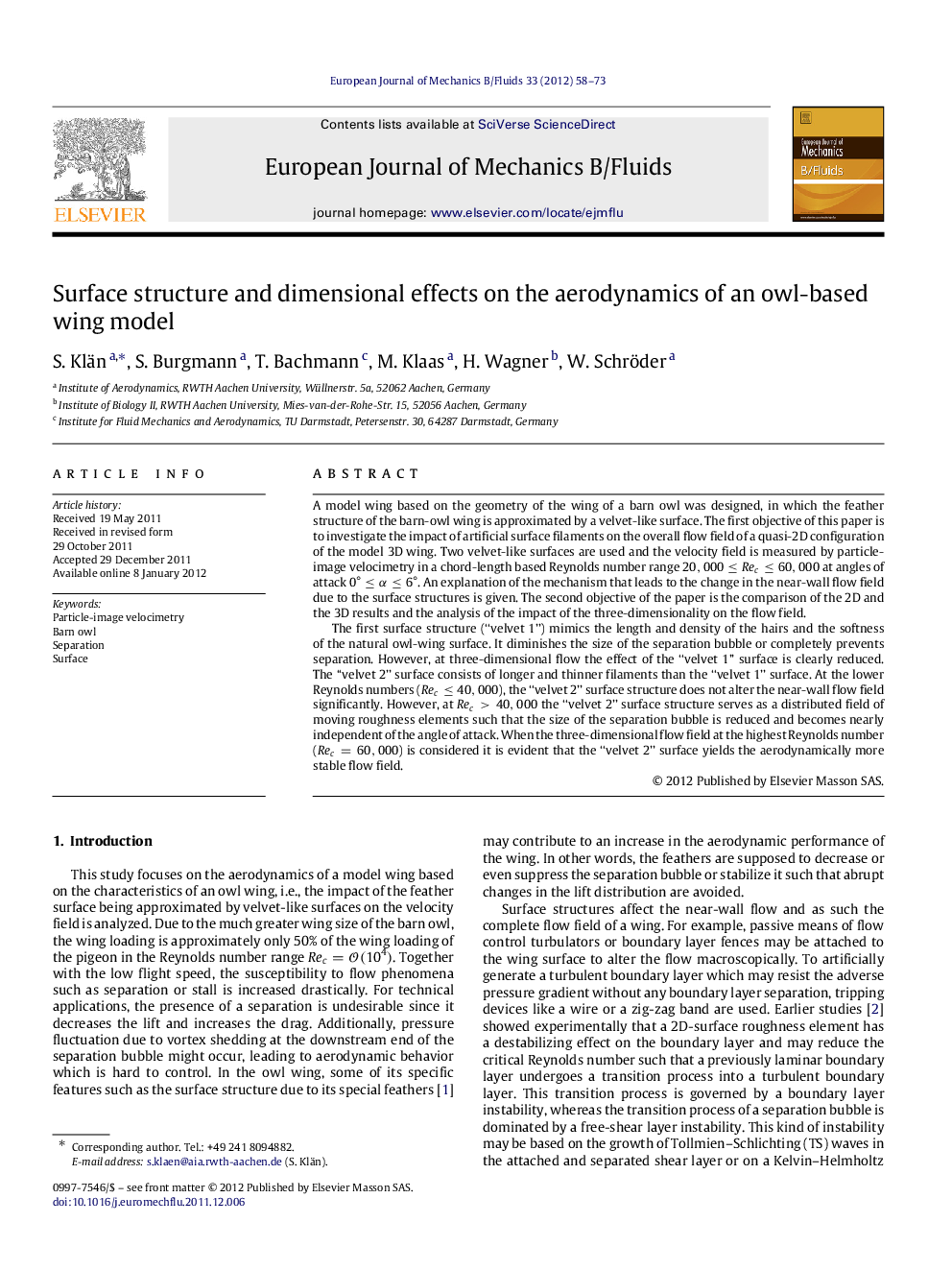| Article ID | Journal | Published Year | Pages | File Type |
|---|---|---|---|---|
| 650496 | European Journal of Mechanics - B/Fluids | 2012 | 16 Pages |
Abstract
The first surface structure (“velvet 1”) mimics the length and density of the hairs and the softness of the natural owl-wing surface. It diminishes the size of the separation bubble or completely prevents separation. However, at three-dimensional flow the effect of the “velvet 1” surface is clearly reduced. The “velvet 2” surface consists of longer and thinner filaments than the “velvet 1” surface. At the lower Reynolds numbers (Recâ¤40,000), the “velvet 2” surface structure does not alter the near-wall flow field significantly. However, at Rec>40,000 the “velvet 2” surface structure serves as a distributed field of moving roughness elements such that the size of the separation bubble is reduced and becomes nearly independent of the angle of attack. When the three-dimensional flow field at the highest Reynolds number (Rec=60,000) is considered it is evident that the “velvet 2” surface yields the aerodynamically more stable flow field.
Related Topics
Physical Sciences and Engineering
Chemical Engineering
Fluid Flow and Transfer Processes
Authors
S. Klän, S. Burgmann, T. Bachmann, M. Klaas, H. Wagner, W. Schröder,
